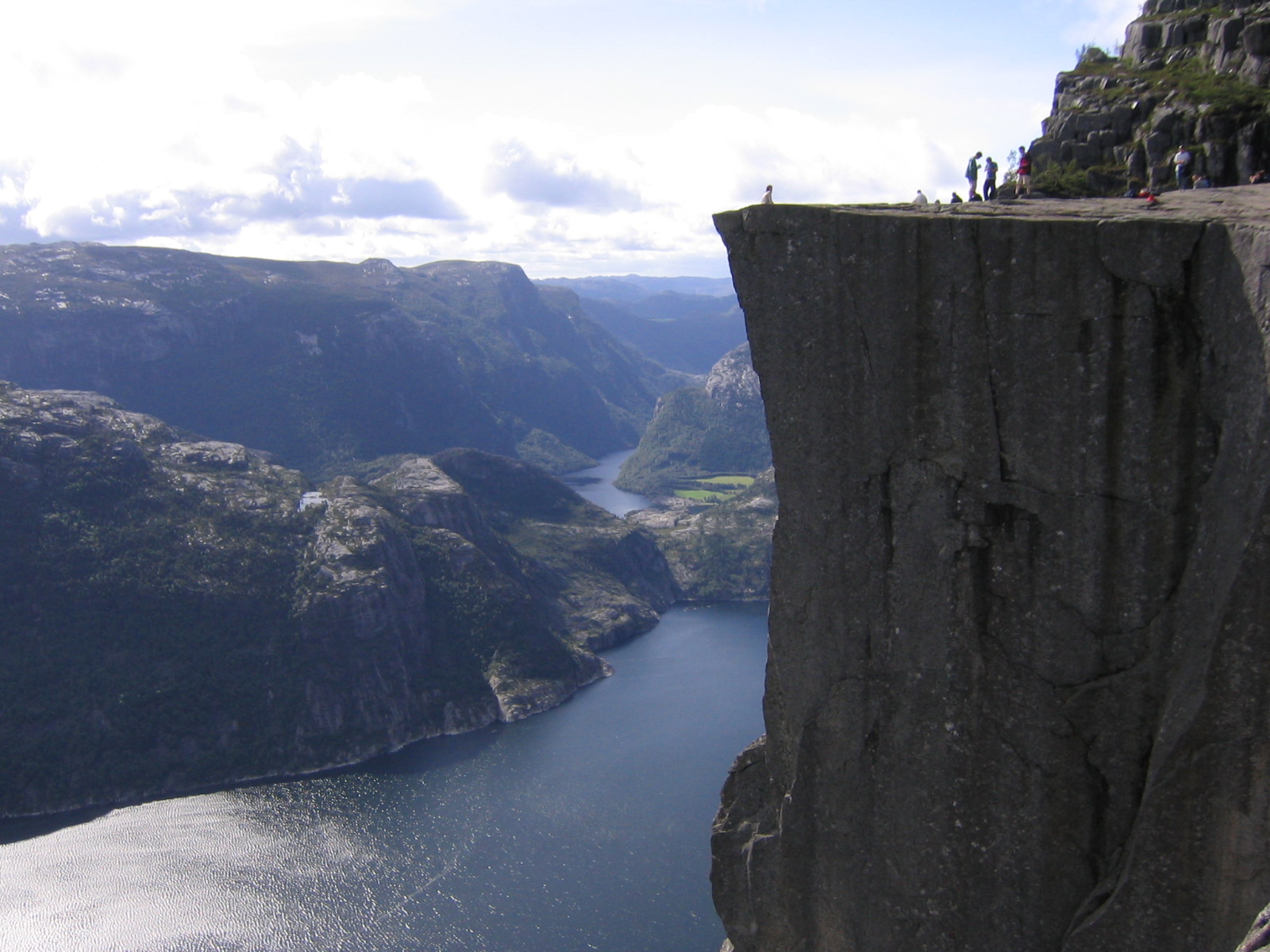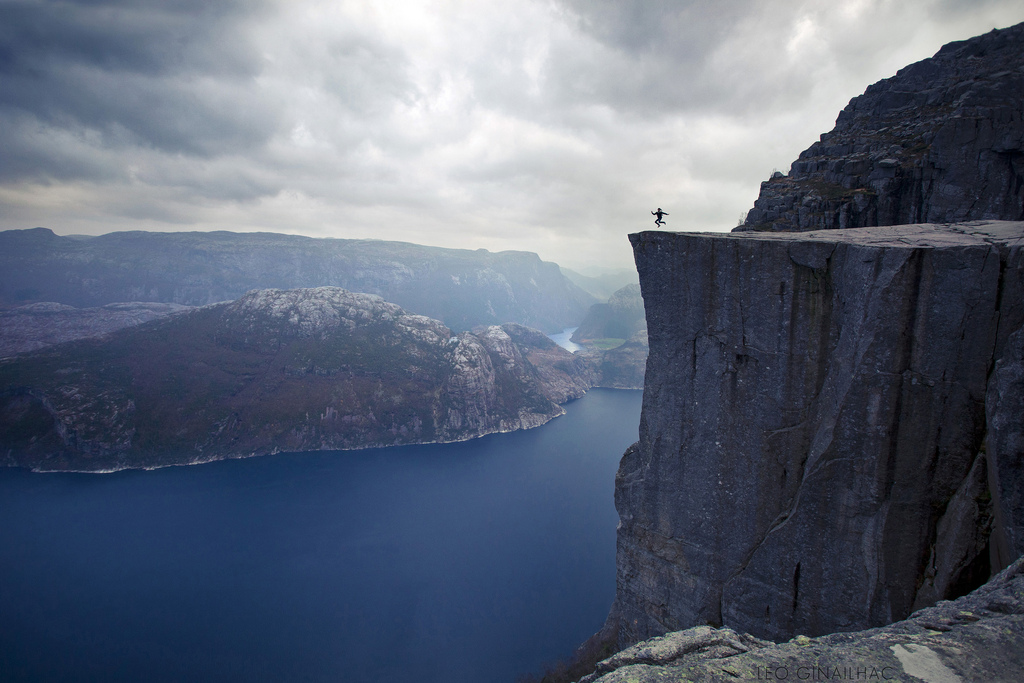Preikestolen or Prekestolen, also known by the English translations of Preacher's Pulpit or Pulpit Rock, is a famous tourist attraction in Forsand, Ryfylke, Norway. It consists of a steep cliff which rises 604 metres (1982 feet) above Lysefjorden, opposite the Kjerag plateau, with an almost flat top of approximately 25 by 25 metres (82 by 82 feet).
Tourism at the site has been increasing in recent years, with between 150,000 and 200,000 visitors in 2012 making it one of the most visited natural tourist attractions in Norway. Due to its increased popularity, there is currently a project under way to improve the path to the site, which is only accessible via a 3.8 km (2.4 mi.) hike.
The old local name of the site is Hyvlatonnå (English: Planned Tooth). The name Prekestolen (without the i) was coined around the year 1900 when the local tourist organisation, Stavanger Turistforening (no) wanted to promote the site for trekking. The "i" was added later to concord with Nynorsk, the official local form of Norwegian, and the site is now known both locally and officially as "Preikestolen."
Improvement project
In early April 2013, a project started to improve the path up to Preikestolen as the old one is so small that it often causes "delays", and at some points on the path it is sometimes impossible to get through. Per August 2014, the path has been completed. Access to the plateau has been improved and traffic on the way up and down has been much less delayed because of bottlenecks.
Safety
The authorities have opted not to install fencing or other safety devices as they felt it would detract from the natural beauty of the site and the fact that fatalities at the site are extremely rare, despite having approximately 200,000 visitors each year. Furthermore, there were concerns that fences or other devices might encourage dangerous behavior such as climbing onto the fences. It should also be noted that it is a policy from Norwegian authorities that "we cannot fence in all nature in this country", and this is supported by the Norwegian population who are generally more accustomed to "dangerous nature" of their country than foreign tourists.
Up until 2013 there had been no accidental fatalities at the site. However, there were previously suicides and suicide attempts. In February 2000, an Austrian woman and a Norwegian man committed a joint suicide by jumping together off the cliff after meeting on the internet and forming a suicide pact. In October 2004, a young German couple were on their way to the cliff to commit suicide but were stopped by the Norwegian authorities before being able to carry out the act. In 2013 a Spanish tourist became the first person to die from an accidental fall, however there has been indications that this was also a suicide, not an accident.
Formation
The cliff was formed during the ice age, approximately 10,000 years ago, when the edges of the glacier reached the cliff. The water from the glacier froze in the crevices of the mountain and eventually broke off large, angular blocks, which were later carried away with the glacier. This is the cause of the angular shape of the plateau. Along the plateau itself there continues to be a deep crack. Due to these cracks, the plateau will at some point fall down, but all the geological investigations have revealed that this will not happen in the foreseeable future, and geologists have confirmed the safety of the plateau.











